5 minutes
Unlock the secret to organizational harmony by adopting a "both/and" mindset to foster collaboration and align your teams for sustainable growth.
Did you hear what the word of the year was for 2024?
No, not “demure.” According to Merriam-Webster, the word of the year was “polarization.”
Polarities aren’t a new phenomenon though it seems that we’ve reached a boiling point. From a global stage to our communities and kitchen tables, we can observe and feel the negative effects of polarization. Increased mistrust, isolation, and tribalism are just some of the symptoms that occur when polarities are imbalanced.
For credit union leaders, unbalanced polarities can create internal headaches including miscommunication, friction, and conflict which impair your organization’s ability to grow and be successful.
Every Complex Problem Has a Simple Solution (And It’s Wrong)
To be clear, the issue is not the polarities themselves. Polarities are naturally occurring instances where two opposite and interdependent states must coexist.
While the negative effects can be apparent, polarities aren’t always easy to spot. They fly under the radar and can appear as “problems” that require a solution. However, the standard approaches to problem-solving only provide temporary relief without addressing the root issues at play. Negative effects occur when we try to solve polarization with the simplest or quickest solutions.
Consider the polarity of “work” and “rest.” We know what it’s like when we lean too far to one side. If we work too much, we burn out and need a break. When we rest too much, we get antsy and need to move. In other words, the overuse of one pole makes the other more desirable.
In this case, an “either/or” problem solving approach causes us to swing back and forth between rest and work. It continues a pattern of over-indexing and over-correcting. After a while, we are naturally drawn towards a “both/and” mindset which acknowledges the necessity of both poles and the balance that must be struck between them.
Polarities in Leadership and Organizations
Whether it’s a conscious effort or the brain on autopilot, leaders are constantly managing polarities such as confidence and humility; control and empowerment; or realism and optimism. Finding the balance within something we don’t see is difficult. It can become even more difficult when we attach our identity to one pole over the other.
For example, someone who self-identifies as a “servant leader” will be more likely to empower others rather than control decisions and situations. This might be a natural or comfortable approach based on that individual’s core values or experiences. However, over-indexing too often may create a loss of control that weakens accountabilities or muddies strategic focus.
Organizations—including credit unions—face their own set of polarities too. Examples include structure and flexibility; stability and change; or centralization and decentralization. Like the challenges that leaders face, an organization’s inability to identify and balance polarities can be detrimental.
If a credit union’s leadership consistently favors “stability” over “change” in their strategic decision making, it will ultimately weaken their ability to innovate and respond to change.
There is much more to say about how identities interplay with polarity management. For now, we can underscore the importance of examining our preferences, behaviors and patterns.
How Polarities Negatively Impact Credit Unions
We’ve worked with credit unions across the country to uncover and solve challenges created by polarization. This has revealed commonalities that span teams and organizations of all sizes and locations. Here are some credit union departments that are impacted by polarization:
- Lending and Risk
- Member Service and Compliance
- Innovation and Finance
Each of those departments and functions are essential to the growth and sustainability of the credit union. Moreover, each area is interdependent and cannot function without the other.
However, perceptions can be very different. Whether it’s said out loud or shared quietly, sometimes you’ll hear teams talk about other teams:
“What is that department even thinking?”
“Why do they insist on making my job impossible?”
“If it wasn’t for them, we could do so much more.”
Left unaddressed, these sentiments can devolve into an unhealthy “us versus them” dynamic within your own walls.
Questions to Consider, Actions to Take
Recognizing and managing polarities is a process that requires time, reflection, and perspective.
Our polarity workshops allow us to work with executive teams, boards, team leaders, and entire organizations to share a variety of viewpoints and build new paths forward on common ground.
Drawing from those experiences, here are some initial questions we’d pose to credit union leaders:
- How are you communicating the relationship between departmental functions? As credit unions become larger and more complex, leaders should consider how different areas support each other and how that detail is shared across the organization.
- Are your goal structures complementing or competing with each other? There are sometimes instances where one department’s goals are structured in a way that disincentivizes them from helping another department to reach theirs. Determine where the intersections and shared responsibilities are, and ensure they are represented in how performance is measured.
- Do your employees realize how they’re connected to the bigger picture? The overall success of the credit union is dependent on every department and every individual achieving success. No one in your credit union should feel like a meaningless cog in a giant machine. It is a valuable activity to connect your credit union’s purpose with your employee’s day-to-day work.
Whether you're experiencing ongoing friction between teams or integrating organizational cultures as part of a merger, CUES can help. Reach out to learn about our polarity workshops and facilitation resources today!
Chad Helminak VP/Talent Development Programming at CUES brings two decades of leadership experience supporting purpose-driven organizations and leaders in the credit union industry. He has worked with notable organizations including the National Credit Union Foundation, TruStage, Filene Research Institute, and the Wisconsin Credit Union League. Chad facilitates experiential training for credit union leaders, leads boards and executive teams through strategic sessions, and drives growth in people, programs, and organizational capabilities.








